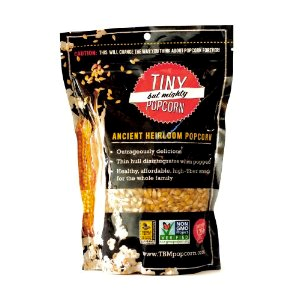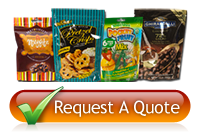Protective packaging serves several purposes. First, it’s a functional product that protects a variety of tangible goods. These goods can be anything from dog food to plant food and anything in between. Pet packaging protects your pet’s food and maintains freshness, and lawn and garden packaging protects plant seeds until customers can get them into the ground.
But there’s another big benefit to packaging that goes beyond protection: the ability to influence consumer behavior.
We’re not talking about hypnosis or mind reading here, but your flexible retail packaging serves as a powerful marketing tool. And it’s powerful enough to potentially take control of your customer’s buying decisions.
Spell it Out With Protective Packaging
We all know that words are extremely powerful—especially in the world of marketing. There’s a fine line between crafting powerful sales copy and keeping your facts straight. Misleading product information can result in a big mess, but there’s ways to affluently translate your message without compromising your credibility.
Here are a few tips to writing copy to influence consumer behavior without compromising your credibility.
- Keep your message short and snappy. Chances are that you don’t have a ton of room to write a book on your flexible retail packaging. Even if you do, writing a book in this situation is not the time or the place. Customers want information that they can quickly consume.
- Make your message easy to understand. In this situation, you want to do your customer’s thinking for them. If they have to think too hard or long about what you’re trying to say, they likely won’t stick around for long.
- Highlight what’s important. What is the key message that you are trying to deliver to your consumers? It helps to remember your audience while you compose the perfect copy. Are they health enthusiasts? Are they children? When you have a solid grasp of who is buying your product, you can get a better angle for influencing your customers with your protective packaging.
Getting your brand’s message on point is critical for convincing customers to buy. You might not get your message perfect right out of the gate, but get to know your customers on a personal level and integrate their needs into your copy. Once you make that connection with your customers, influencing a purchase becomes much easier.
Get Real With Graphics And Clear Windows
When your product is sitting on the store shelf, sometimes your customers might have a hard time envision the real thing out of the bag. To get around with consumers who need some extra visual motivation to buy, consider including lifelike graphics that display your product on your flexible packaging.
One option to demonstrate your product with graphics is to create life size serving sizes right on the package. This is especially helpful to customers who are watching their portion sizes and can get an idea of a serving even before opening the bag.
Clear windows are even better for giving customers a real glimpse of your product. Not only will they get an extremely accurate portrayal of your product, they will be able to see the texture as well. Visual cues can have a heavy influence on consumer behavior. If you are trying to tap into the senses with your packaging, visual elements are key.
 Kick Things Up With Color and Typography
Kick Things Up With Color and Typography
It shouldn’t come as a surprise that color has a big influence on buyer decisions—whether it’s a conscious decision or not. There’s a whole world (not to mention, a whole wheel) of colors to choose from, and selecting the right color can help grab attention and increase sales.
- Blue is one of the safest colors in sales. It signifies trust and relaxation. Oreo and Chips Ahoy! are two examples of flexible retail packaging that uses the color blue
- Black shows power and authority
- Red is a stimulating color—it’s believed to generate excitement, but sometimes it can cause alarm
- Green symbolizes nature; many companies who produce natural products choose to have some shade of green on their protective packaging
- Yellow signifies optimism and clarity
Once you have your packaging color scheme, it’s time to consider typography. Typography is the font choice that brands use to deliver their message on packaging. And believe it or not, there is an art to choosing the right fonts for your brand.
- Combine san-serif fonts with a serif font. An example of this Myriad and Minion
- Don’t try to combine fonts that are too similar, such as Minion and Novelty
- Keep a contrast between your font choices
- Ideally, stick to only two different font faces—three fonts maximum. Too many different font styles will come across as distracting and confusing, leading customers to check out the retail packaging of your competitor.
- Fonts can set moods. Large, bold fonts can stimulate excitement, while cursive fonts can bring in a feeling of elegance
- Vary the font weights (boldness) that are in the same family
Learning how to influence your customers through flexible retail packaging is the key to establishing a credible and desirable brand. Striking the right emotions while customers are at the grocery store can make or break your sale. And not to mention, overriding the competition depends on influential packaging and your brand.
If you need extra help determining how to influence your customers through your protective packaging, work with a supplier whose graphics and marketing department can help you select the right elements to set the tone.






